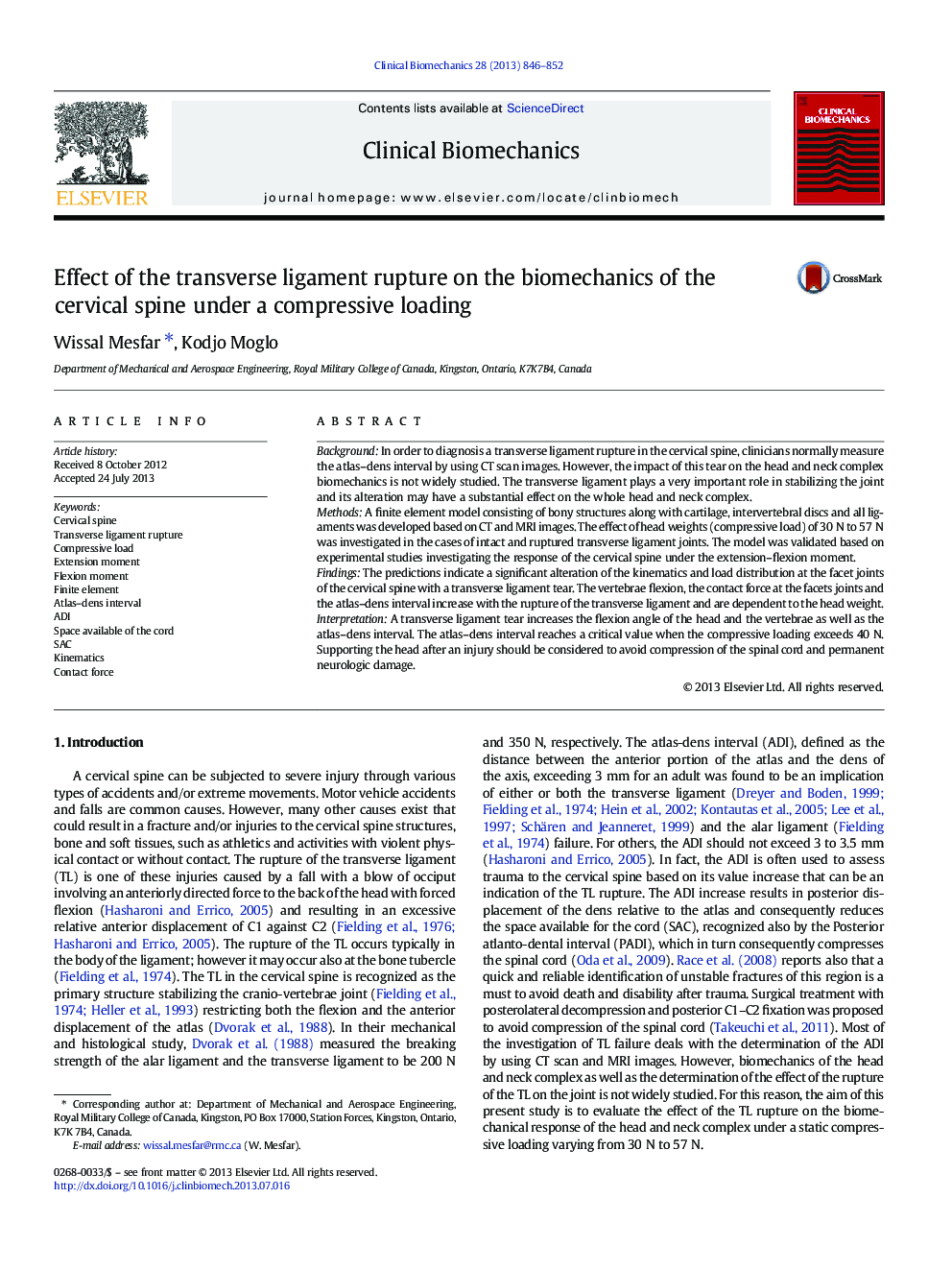| Article ID | Journal | Published Year | Pages | File Type |
|---|---|---|---|---|
| 6205102 | Clinical Biomechanics | 2013 | 7 Pages |
BackgroundIn order to diagnosis a transverse ligament rupture in the cervical spine, clinicians normally measure the atlas-dens interval by using CT scan images. However, the impact of this tear on the head and neck complex biomechanics is not widely studied. The transverse ligament plays a very important role in stabilizing the joint and its alteration may have a substantial effect on the whole head and neck complex.MethodsA finite element model consisting of bony structures along with cartilage, intervertebral discs and all ligaments was developed based on CT and MRI images. The effect of head weights (compressive load) of 30Â N to 57Â N was investigated in the cases of intact and ruptured transverse ligament joints. The model was validated based on experimental studies investigating the response of the cervical spine under the extension-flexion moment.FindingsThe predictions indicate a significant alteration of the kinematics and load distribution at the facet joints of the cervical spine with a transverse ligament tear. The vertebrae flexion, the contact force at the facets joints and the atlas-dens interval increase with the rupture of the transverse ligament and are dependent to the head weight.InterpretationA transverse ligament tear increases the flexion angle of the head and the vertebrae as well as the atlas-dens interval. The atlas-dens interval reaches a critical value when the compressive loading exceeds 40Â N. Supporting the head after an injury should be considered to avoid compression of the spinal cord and permanent neurologic damage.
